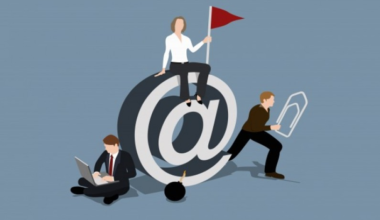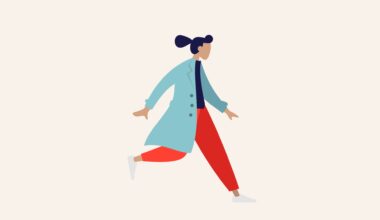The article refers to questions of joint authorship in matters related to a scientific paper. It was for the Polish Supreme Court to determine whether mere deletions of text are sufficient to claim authorship. The court held that the claimants were entitled to claim joint authorship as their input was sufficiently original and individual in its nature and even more since they removed selected and substantive parts of the text prepared by the defendant. This is a milestone judgment presenting bold argumentation—however, with certain flaws in reasoning leaving some issues still open.
The dispute
The matter that resulted in a court dispute arose between scholars employed by the Polish Medical Academy: three claimants having professional medical background and one defendant who majored in humanities. The defendant, a professor lecturing so-called “cultural therapy and art in medicine”, started her work at the Institute of Mother’s and Child’s Health of the Polish Medical Academy. The Academy was headed by one of the claimants. During the work at the Polish Medical Academy the defendant agreed to be engaged in a research project regarding the impact of music on alleviation of pain in gynaecology, e.g. in childbirth. The project entailed preparation of some scientific papers, which was made in co-operation with her colleagues having a medical background. They also subsequently became claimants in the court dispute. The defendant informed her colleagues of materials for the first publication that required professional medical verification by the latter and agreed to that verification and joint ownership. The article, entitled “Music and music therapy in medicine”, was delivered by the defendant and verified by the scholars, who made some corrections and deletions related to medicinal observations and relevant evidence since they did not agree with some of the theses included in the article that music may be a substitute for gynaecological anaesthesia and is connected with immunology. It should also be mentioned that the article consisted of fragments of the defendant’s book published previously in 2001, Art in the service of medicine: From ancient times to postmodernism, which was published without corrections and deletions made by the scholars in the article in question. The defendant accepted the changes introduced to her article by the claimants, who made also some stylistic changes. The article “Music and music therapy in medicine” was published in August 2002 under the names of the defendant and the three claimants. Once the article was published, the defendant raised objections. She contacted the publishing house, claiming that she had never worked with one of the claimants. She also questioned publicly the joint authorship of claimants. Consequently, the defendant was dismissed from her work at the Polish Medical Academy and a writ was filed against her with the court for the protection of the authorship. The defendant filed a counterclaim against the claimants, demanding protection of her copyright against her former colleagues by declaring that she was the author of the article, that the deletion and corrections made by her former colleagues had no creative and individual character as they only removed some parts of the article, and finally that she did not agree to joint authorship.
The verdicts and grounds through the instances
The Supreme Court agreed with the court of first instance (the District Court) that art.8(1) of the Polish Copyright Law Act (CLA) provides for the presumption that the author is the person whose name has been indicated as the author on copies of the work (or whose authorship has been announced to the public in any other manner in connection with the dissemination of the work). In light of the said presumption it was the defendant’s role to prove that she was the only author of the article. According to the District Court the defendant fail to prove her sole authorship and accordingly the above presumption was not rebutted. Furthermore, the claimants had made substantive changes to the defendant’s paper and their contribution was of a creative and individual nature. The District Court found also that there had been an agreement between the claimants and the defendant on a common work. It was emphasised by the court that it is sufficient that such an agreement was implied. The judgment of the District Court was appealed by the defendant to the Court of Appeal. The Court of Appeal
agreed, however, with the findings of the District Court and dismissed the appeal. In consequence, the defendant decided to file a final appeal to the Supreme Court against the judgments of the courts of first and second instances. The appeal to the Supreme Court was submitted on the grounds of infringement of procedural and substantial law. The defendant claimed that the factual side of the case was wrongly established. She argued that the verdict of the District Court was based solely on the expert’s opinion instead of making an independent judgment based on a proper interpretation of art.1(1) of the CLA.[1] Moreover, the defendant stated that the Court of Appeal had wrongly interpreted art.9(1) of the CLA.[2] Namely, she argued this provision of law (properly interpreted) opposes claiming joint authorship by the person who merely introduced changes in form or structure of a scientific paper created by someone else (in this case, by deleting certain parts thereof). In this respect, she took a view that person introducing such changes cannot be considered as co-author, since his contribution is not sufficiently creative and individual.
The Supreme Court disagreed with the defendant’s argumentation and dismissed the final appeal. It was found that the District Court’s decision was not based solely on the expert’s opinion but rather also on an independent legal assessment of the claimants’ work in accordance with art.1(1) of the CLA. In this respect, the Supreme Court emphasised that the assessment of whether someone is an author of a work under the CLA is a matter of substantive law. The Supreme Court observed that the District Court independently compared the article under dispute with the respective parts of the aforementioned book Art in the service of medicine (written by the defendant) while assessing the claimants’ contribution. The expert’s opinion had therefore only an auxiliary nature. The Supreme Court also indicated that the judgment of the Appeal Court was referring to the legitimate interpretation of art.1(1) of the CLA. Namely, the Supreme Court held that the claimant’s contribution was not limited merely to the deletion of selected theses from the version of the paper prepared by the defendant. The claimants removed numerous parts of the paper which suggested that music and music therapy may be a method of pain treatment. Consequently, the court observed that the changes introduced by the claimants to the original version of the paper had been content-related and of a substantive nature. The claimants changed not only the volume and content of the initial article but also its general scientific overtone and characteristics. The questioned fragments were removed because of their contradiction of medical knowledge, which the defendant did not possess. In this context, the Supreme Court underlined that it is highly crucial how the issues are presented in every scientific work. What is important is that the court pointed out that the removal of certain parts of such work—for substantive reasons—may have different consequences under the CLA from analogous modifications in musical works or literature. As a result of the changes introduced by the claimants, a new work has been created having a different nature and characteristics in comparison with the initial paper proposed by the defendant. Bearing in mind the foregoing, the Supreme Court held that the contribution (modifications) made by the claimants was of a creative and individual nature and as such was under the protection of the CLA.
Regarding the issue of the agreement concluded between the claimants and the defendant on joint authorship of the scientific paper under dispute, the Supreme Court agreed that the creation of a collective work and joint authorship requires participants who express their will to combine their efforts to create a work together as co-authors. In this respect, the Supreme Court pointed out that only one of the claimants could be the addressee of the defendant’s objections in this case, namely the person who had not been in direct contact with the defendant but was engaged by the other claimants as an expert in immunology, and who made no contribution in writing. The court stressed, however, that the defendant agreed to that “distant” claimant supervising the project. The only condition that the defendant made in that respect was to for the person engaged in preparing the article to “contribute something from oneself”. Having that said, the court held that the defendant expressed her implied consent for the joint authorship of every person engaged in preparation of the article. Furthermore, the court expressed the view that it is not necessary for establishing joint authorship of the collective work to know the names of the all the (joint) authors upfront. Consequently, art.9(1) of the CLA had been observed in this case, despite the objections raised by the defendant.
Commentary
Upon analysing the approach taken by the Supreme Court in the case described above, it is worth mentioning that the arguments presented by the Polish Supreme Court in the judgment in question resembles in some ways the reasoning of the English High Court (Chancery Division) in its judgment of March 18, 1998 in the case of Robin Ray v Classic FM Plc.[3] In that case Classic FM Plc claimed its copyright in the work in dispute (a music catalogue) on the basis that Mr Ray had put into writing ideas, thoughts and material communicated to him by the representatives of Classic FM Plc. First of all, the court settling this case underlined that ideas are not subject to copyright—put simply, only ideas expressed on a carrier (like paper) may be protected by copyright, provided they have a creative and individual nature. As the court said, in the case of literary works, the joint authorship means that the co-author participates in the writing and shares responsibility for the form of expression. However, the High Court, referring to an earlier judgment in the case of Cala Homes (South) Ltd v Alfred McAlpine Homes East Ltd,[4] indicated that it is not required for every co-author to contribute to a joint work by exercising penmanship, i.e. to physically write certain parts of text in order to claim co-authorship. Namely, the court held that joint author needs to have direct responsibility for what ends up on paper. This responsibility should be considered as equivalent to the penmanship which is required to claim co-authorship. Despite the obvious circumstance that both the judgments, i.e. the Polish Supreme Court’s judgment and the High Court one, are based on different reasoning and legal systems, it seems they took a similar approach. Namely, it is hard to disagree that a person who simply removes selected parts of the text does not exercise traditional penmanship. Should the deletions be, however, of a substantive nature and within the meaning of having a responsibility for what ends up on paper, they are also sufficient to establish joint authorship, and even more if the deletions (or corrections) were made in a scientific paper.
From the practical perspective, the judgment in question is of great importance, particularly for academia where such modifications of scientific papers are quite regular. However, the outlook presented by the Polish Supreme Court in this judgment may accidentally entail some adverse effects. Namely, it was relatively easy in this case to establish whether the editing made by the claimants was of a creative nature, as they and the defendant were experts operating in different fields of knowledge (medicine and humanities respectively). It may, however, be more complicated to make this kind of distinction in the case of papers elaborated only by persons having the same specialisation. Taking additionally into consideration the specific labour relationships existing in academia (where superior and subordinate scholars work together on scientific projects), lower-tier employees may find in fact some difficulty in protecting their moral rights to their works. It may also be interesting to see how the present approach applies to other kind of works (non-textual) where selected parts of work are removed. This for instance concerns the cropping of pictures which may be often cut for substantive reasons, such as to highlight certain elements or to draw the attention of onlooker to certain parts thereof. Last but not least, it may be dubious whether the Supreme Court correctly interpreted the defendant’s consent to co-authorship given in this case. Whereas the implied nature of her consent is not disputed, it is not very clear to what exactly the defendant had agreed. The grounds of the case indicate that the defendant had agreed to co-authorship under the condition that “other co-authors will contribute something from themselves”. She had not, however, mentioned the exact names of the co-authors. What is more important, she had never heard of one of the co-authors before the paper was published.
The foregoing issues lead to the question whether consent for co-authorship may be blanket, i.e. given for all kinds of changes in the text made by all kinds of persons. In this context, it should be noted that according to the predominant approach in Polish legal academia and jurisprudence, the will of all prospective co-authors is required for creation of a joint work, and agreement concluded between co-authors is a condition of their joint authorship.[5] In this respect, it might be quite controversial whether a blanket consent is sufficient to have joint authorship established. After all, an agreement between co-authors should express that they wish to join their efforts in creating the work. Therefore it sounds reasonable to claim that intention for joint authorship should be declared to the specific person in order to constitute such agreement.
Consequently, in our view blanket consent may not be sufficient for joint authorship. Unfortunately, the Polish Supreme Court did not shed much of light on this issue in this judgment. Moreover, it is not apparent that the defendant understood mere deletion of text (even having a substantive nature) to be a contribution while giving her consent for co-authorship. The actual scope of consent should always be thoroughly examined in such cases. The defendant might never have agreed to joint authorship if she had been aware what the actual contribution would look like in the outcome.
Nevertheless, this judgment may be a milestone in legal thinking about copyright and the subjects of its protection in Poland. So far the Polish courts used to take a rather conservative approach by manifesting moderate reluctance in granting copyright protection to non-traditional forms of expression. In this respect, the jurisprudence used to consider such forms of expression as not sufficiently creative for being the objects of copyright. For instance, in judgment dated November 7, 2002 (Case V CK 391/02)[6], the Polish Supreme Court held that amendments introduced into an academic textbook which are not substantive but rather concern the style thereof are not subject to protection conferred by copyright law. Such a standpoint may be controversial. It is not exaggerating to say that stylistic corrections may bear the footprint of the creator and comprise an original contribution to the work. Such amendments should not be confused with plain proofreading aimed at the mere correction of syntax errors. What is more, the majority of jurisprudence and legal academia are of the opinion that copyright protects not only content itself but also a form of expression. In effect, such a conservative approach denies copyright protection to much of human creative activity. In this context, the judgment of the Supreme Court is a bold step towards abandoning such a viewpoint.[7]
_____________________________________________________________________________________________________________________________________
[1] CLA art1(1): “The subject matter of copyright shall be any manifestation of the creative activity of individual nature, established in any form, irrespective of its value, designation or manner of expression (work).” [2] CLA s.9(1): “The co-authors shall enjoy copyright collectively. It shall be presumed that the amounts of shares are equal. Each of the co-authors may claim the amounts of shares to be determined by the court on the basis of his contribution of creative work.” [3] Robin Ray v Classic FM Plc [1998] E.C.C. 488 Ch D. [4] Cala Homes (South) Ltd v Alfred McAlpine Homes East Ltd [1995] F.S.R. 818 Ch D. [5] See J. Barta (ed.), Prawo autorskie. System Prawa Prywatnego, Vol.13 (C.H. Beck, 2007), pp.72–82. [6] See J. Kolczynski, a critical commentary (gloss) on the Supreme Court Judgment of z 7.11.2003 r. V CK 391/02 (2005) 2 Gdanskie Stud.Prawn.Prz.Orz. 93. [7] Nevertheless, it is worth mentioning that the Polish Supreme Court held in an old judgment dated November 18, 1960, Case I CR 234/60, that it is lawful to claim joint authorship if the author elaborated new materials in his part of the book together with reviewing and improving other parts thereof, even while using certain sources—however, without merely rewriting them.







